Missouri elected its member August 2, 1824.
| District | Incumbent | This race | |||
|---|---|---|---|---|---|
| Member | Party | First elected | Results | Candidates | |
| Missouri at-large | John Scott | Adams-Clay Democratic-Republican | 1820 | Incumbent re-elected as Anti-Jacksonian. |
|
| Elections in Missouri |
|---|
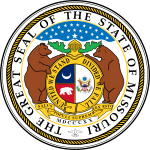 |
Missouri elected its member August 2, 1824.
| District | Incumbent | This race | |||
|---|---|---|---|---|---|
| Member | Party | First elected | Results | Candidates | |
| Missouri at-large | John Scott | Adams-Clay Democratic-Republican | 1820 | Incumbent re-elected as Anti-Jacksonian. |
|

The 1824 United States presidential election was the tenth quadrennial presidential election. It was held from Tuesday, October 26 to Wednesday, December 1, 1824. Andrew Jackson, John Quincy Adams, Henry Clay and William Crawford were the primary contenders for the presidency. The result of the election was inconclusive, as no candidate won a majority of the electoral vote. In the election for vice president, John C. Calhoun was elected with a comfortable majority of the vote. Because none of the candidates for president garnered an electoral vote majority, the U.S. House of Representatives, under the provisions of the Twelfth Amendment, held a contingent election. On February 9, 1825, John Quincy Adams was elected as president without getting the majority of the electoral vote or the popular vote, being the only president to do so.
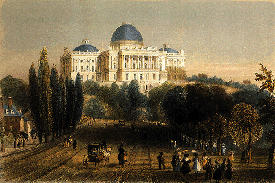
The 16th United States Congress was a meeting of the legislative branch of the United States federal government, consisting of the United States Senate and the United States House of Representatives. It met in Washington, D.C. from March 4, 1819, to March 4, 1821, during the third and fourth years of James Monroe's presidency. The apportionment of seats in the House of Representatives was based on the Third Census of the United States in 1810. Both chambers had a Democratic-Republican majority.

The 19th United States Congress was a meeting of the legislative branch of the United States federal government, consisting of the United States Senate and the United States House of Representatives. It met in Washington, D.C. from March 4, 1825, to March 4, 1827, during the first two years of the administration of U.S. President John Quincy Adams. The apportionment of seats in the House of Representatives was based on the Fourth Census of the United States in 1820. The Senate had a majority of Jackson Men, while the House had an Anti-Jackson (pro-Adams) majority.
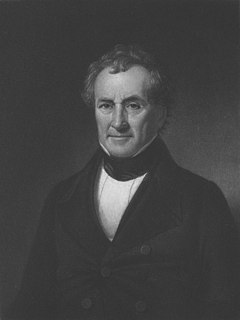
James Tallmadge Jr. was a United States lawyer, and politician who served as a United States Representative from New York's 4th congressional district.
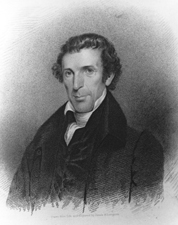
William Taylor Barry was an American statesman and jurist. He served as Postmaster General for most of the administration of President Andrew Jackson and was the only Cabinet member not to resign in 1831 as a result of the Petticoat affair.

These are tables of congressional delegations from Missouri to the United States House of Representatives and the United States Senate.
William Henry Ashley was an American miner, land speculator, manufacturer, territorial militia officer, politician, frontiersman, trapper, fur trader, entrepreneur, and hunter. Ashley was best known for being the co-owner with Andrew Henry of the highly successful Rocky Mountain Fur Incorporated, otherwise known as "Ashley's Hundred" for the famous mountain men working for the firm from 1822–1834.
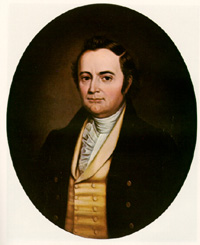
Elections to the United States House of Representatives for the 19th Congress were held at various dates in different states between July 1824 and August 1825, coinciding with the contentious 1824 Presidential election. After no Presidential candidate won an electoral majority, in February 1825 the House of the outgoing 18th Congress chose the President in a contingent election.
Mark Langdon Hill was United States Representative from Massachusetts and from Maine. He was born in Biddeford on June 30, 1772. He attended the public schools, then became a merchant and shipbuilder in Phippsburg. He was an overseer and trustee of Bowdoin College. He is the nephew of John Langdon. New Hampshire governor, Senator and patriot.

Charles Daniel Drake was a United States Senator from Missouri and Chief Justice of the Court of Claims.
Thomas Butler was a member of the U.S. House of Representatives from 1818 to 1821 representing the state of Louisiana. He served one and a half terms as a Democratic-Republican.

John Bullock Clark Sr. was a politician who served as a member of the United States Congress and Confederate Congress.
James Robinson McCormick was a United States Representative from Missouri.

Luther Martin Kennett was a U.S. Representative from Missouri.
From the state's creation August 10, 1821 until the end of the 29th United States Congress, and also for the 73rd Congress (1933–1935), Missouri elected its members of the United States House of Representatives at-large statewide on a general ticket.
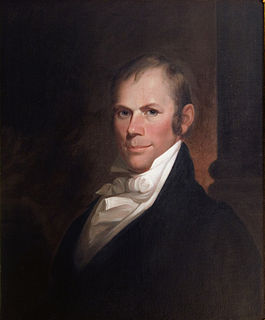
This article describes the United States presidential election, 1824, in Missouri.
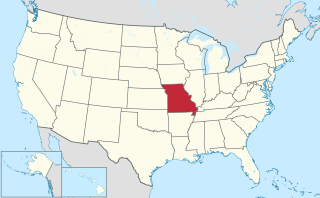
The tables below list the United States presidential elections in Missouri, ordered by year. Since 1904, Missouri has voted for the eventual winner of the presidential election with only four exceptions: 1956, 2008, 2012, and 2020. Missouri was historically viewed as a bellwether state, but the consecutive errors in 2008 and 2012 introduced doubts about its continued status as a bellwether, and an 18.04 point Republican victory in 2016 indicated that it had become a safe Republican state.
Charles Clay Trabue (1798–1851) was an American banker and Whig politician. He served as a member of the Missouri House of Representatives from 1824 to 1828, and as the Mayor of Nashville, Tennessee from 1839 to 1841.

The 1860 United States elections elected the members of the 37th United States Congress. The election took place during the Third Party System, shortly before the start of the Civil War. The Republican Party won control of the Presidency and both houses of Congress, making it the fifth party to accomplish such a feat. The election is widely considered to be a realigning election.